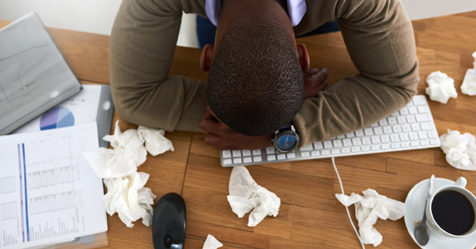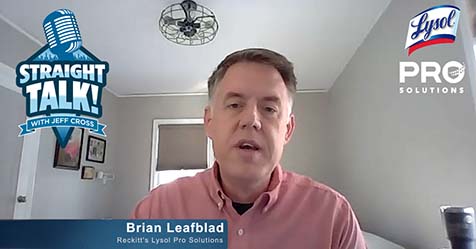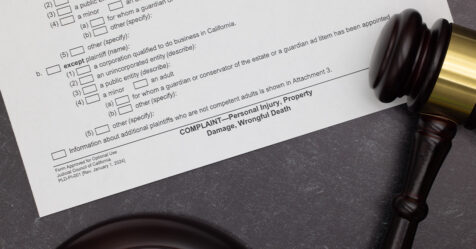Imagine a person checks into the hospital where you work, and she stops in the restroom near the registration area. The patient is greeted by paper towels strewn around the sink and on the floor. She enters one stall to find a clogged toilet. The second stall she enters has no toilet paper. After this uncomfortable restroom experience, it’s unlikely the patient will feel confident about the hospital’s cleanliness.
“Your lobby and your restrooms set the tone as to how your facility is perceived,” said Gregory Gardner, director of environmental services (EVS) at AdventHealth Fish Memorial hospital in Orange City, Florida. “When hospital guests enter those areas and they are clean, they think, ‘you will take care of me. I feel comfortable. I feel safe.’ But if they enter those areas and they are not clean, they will question whether the hospital can properly take care of them or their loved one.”
Germs of concern
People with contagious illnesses who enter hospitals can transmit pathogens to surfaces, including restroom areas. Hospital EVS teams must be diligent in cleaning and disinfecting these
surfaces, especially when dealing with bacteria and viruses that require more effort to kill.
“C. difficile [C. diff] is one of the major pathogens we are concerned with, along with methicillin-resistant Staphylococcus aureus (MRSA) and gram-negative bacteria that can cause infections, pneumonia, and meningitis,” said Mark Heatley, a quality and standards manager for Aramark Healthcare+ who works in Atrium Health System hospitals in Charlotte, North Carolina. “Our goal is to focus on all the pathogens. We know if we can kill C. diff and MRSA, we are also getting all the others.”
Gardner agreed that cleaning to the level that will kill C. diff spores is the goal. “I think the super bug we see more than any other is C. diff, and we see Candida auris (C. auris) every once in a while,” Gardner said. “We clean to that level, using a cleaning agent that will kill C. diff and everything under.”
Arthur Cromartie, who is also with Aramark Healthcare+ and is the director of environmental services at Cone Health Alamance Regional hospital in Burlington, North Carolina, said his
cleaning crew is more focused on eliminating cross contamination than a specific pathogen.
“If someone with an infectious disease is not washing their hands, they will definitely pass it on,” Cromartie said. “One of our biggest fears is that a patient or their family member will leave
the hospital with a healthcare-acquired infection (HAI).”
To protect restroom visitors, cleaning crews at Cone Health Alamance Regional address all high-touch surfaces, including toilets, sinks, and doorknobs. (Cromartie said doorknobs can be
the most germ-ridden surfaces.) They also focus on cleaning and disinfecting soap and towel dispensers.
Restroom challenges
For a relatively small space, restrooms pose unique cleaning challenges. Heatley lamented the numerous high-touch surfaces in restrooms, explaining they pose a unique challenge to EVS crews.
“Restrooms are small but have so many high-touch surfaces—such as grab bars, light switches, and toilet flush valves,” Heatley said. “Our concern is getting all those areas cleaned and
disinfected so somebody else doesn’t come in and pick up a germ. With the presence of bodily fluid in restrooms—from urine to feces to blood—there is all that opportunity for something to be easily spread, especially if someone happens to get sick and throw up.”
Cromartie added he is most bothered by restroom product shortages.
“What I notice is missing paper products, whether it be toilet paper or paper towels,” Cromartie said. “Seeing no paper products is a no-no. Germs are definitely going to be passed around.”
To help resolve product shortages, Cromartie said the hospital tries to buy the largest dispensers and paper product rolls available, and the cleaning crews make frequent restroom rounds.
“First thing in the morning we make sure the first impression areas of the hospital are ready, then check them throughout the day,” he explained. “First impression areas of a hospital include the restrooms, for sure, especially the public restrooms near the registration area.”
According to Gardner, guest impressions are a particular challenge—especially in older restrooms. He explained that the hospital where he works has an older tower and a newer tower.
Although EVS staff clean and maintain the restrooms in the older tower frequently, using the same methods as they do for the newer restrooms, visitor feedback does not reflect that reality.
Gardner said the hospital is planning to renovate older restrooms, because “we want to remove the perception that they are not as clean because they are not as cosmetically pleasing.”
EVS crews pay special attention to the older restrooms, focusing on cleaning and refilling all dispensers regularly as they are not no-touch dispensers. They also pay attention to the tile grout.
“Since the restroom tiles are older in tower one, we really want to make sure we scrub them often; we don’t want anything left in the grout lines, and we don’t want them to stay moist or wet so that
mold grows,” Gardner said.
Tried and true cleaning methods
Most EVS teams follow the strategy of cleaning restrooms from the top down to prevent soiling areas they already cleaned, as well as help eliminate the risk of cross contamination. This strategy means the floor is always cleaned last.
“The infection prevention team we work with considers restrooms floors always dirty; all it takes is for one shoe to hit the floor and it’s dirty,” Heatley said.
“Dusting is always done first. Next, we remove the trash and go from the cleanest surfaces, the mirrors and sinks, then proceed to the toilets and pipes, washing the floors on the way out,”
Cromartie explained.
“After sweeping and mopping the floors, we clean both sides of the door and the door handles,” Gardner added. “Unfortunately, everyone does not wash their hands before opening the door on
the way out.”
Scheduling paired with technology
Hospital EVS workers must clean both private patient restrooms and larger public restrooms. They have found that creating schedules based on restroom traffic works best in keeping all
restrooms clean, according to Heatley.
“We found that a restroom near the main entrance had very high usage early in the morning,” Heatley said. “Anyone coming in for an outpatient procedure was using that restroom in the lobby, so we adjusted our cleaning times to make sure it was stocked and ready to go. The overnight crew makes sure everything is ready and stocked by 5 a.m., then the crew coming in at 8 a.m. restocks and cleans again.”
Typically, EVS staff will clean private patient restrooms once or twice a day and after patients are discharged. Public restrooms are cleaned from two to six times in an eight-hour shift, depending
on the frequency of their use. Restrooms with the heaviest traffic—such as those in the lobby, near surgical waiting areas, and near the cafeteria—are cleaned the most often.
“We have a motion detector that counts people that enter the restrooms,” Heatley said. “It comes in handy for scheduling our cleanings. We might think a restroom does not get high traffic and
only needs to be cleaned once per shift, but then we find out it is being used more often so it needs more cleaning.”
Heatley added that feedback from restroom users is key. “We have a system in our restrooms with a feedback panel that allows people to press a button that says paper products needed, or soap
needed, or there’s a leak or a clog,” he said. “These messages get sent to an email into a smart phone, alerting our staff.”
Cromartie also works in facilities with smart technology that allows hospital visitors to communicate with EVS crews when restrooms need cleaning or supplies.
“Our patient satisfaction scores have skyrocketed since we began allocating additional time to busy restrooms,” he said. “This technology lets patients and their families know we are concerned about the cleanliness of our restrooms. It also allows them to press a button to give a thumbs up if the restroom is in good condition; that’s nice for us to know.”
EVS workers on all three shifts (days, evenings, overnight) clean public restrooms, usually saving the deep cleaning for overnight.
“Doing the dusting and deep cleaning overnight speeds things up for workers during the high-traffic day shifts,” Cromartie said.
Little chance exists of cleaning a heavy-use restroom too much, Gardner added.
“We try to mirror what they do in airports, which is clean busy restrooms once an hour,” he explained. “In between cleanings, we check them to make sure they are not torn apart, with paper
towels or toilet paper all over the floor. Nine times out of 10 there is water on floor that dripped from people’s hands when they turned from the sink to dry them, then they will track that water outside the restroom. And there have been times just five minutes after we finished cleaning, someone had an accident.”
While less popular restrooms are not cleaned as frequently, they do require other tasks that are not necessary in busy restrooms. Heatley explained that sinks and showers in some private restrooms don’t get much use as patients might prefer to wash up when they get home.
“We run the water in the sink for five minutes after every patient discharge; we also run the shower,” he said. “If a sink or shower is not used, water can just sit in the pipes, and if it sits too long
there is a risk it will have the bacteria that causes Legionnaires’ disease.”
Tools of the trade
Just as important as how often EVS crews clean restrooms are the cleaning products and tools they use.
EVS staff at Atrium Health System use a hydrogen peroxide cleaning and disinfection formulation.
“The product we use is a one-step cleaner and disinfectant, so we can get both done at the same time,” Heatley said. The hospital prefers products that are approved by the U.S. Environmental
Protection Agency (EPA) and that have a short contact or dwell time. EVS managers train their staff to follow a five-minute contact time, making sure the surface stays wet with the product for the
full five minutes so the disinfection is complete. Microfiber mops and cloths are typical cleaning tools for EVS staff, who use the cloths and mops in a way to prevent cross contamination.
“We always start with a fresh cloth in the restroom, and fold it so we have eight fresh sides we can use,” Heatley said. “We use multiple microfiber cloths, so we never clean a toilet with
one and go to the next toilet with the same one,” Cromartie said.
EVS workers also depend on product organization to prevent cross contamination.
“We color code using a red or orange cloth for the toilets and a green cloth for other restroom surfaces,” Gardner said. “We also use a separate mop for the restroom. Once we mop out the
restroom, that mop immediately goes into the dirty mop bag.”
Pressure washers and floor scrubbers are popular equipment for healthcare facility restrooms.
“For public restrooms we use a machine that scrubs the floors and then vacuums them dry immediately so there is no risk of slipping,” Heatley said.
Unique restroom designs allow for individualized cleaning plans.
“We have a conference center in the hospital that has large restrooms with drains on the floor,” Gardner said. “On a monthly basis we use a pressure washer with a vacuum on it to clean the walls, corners, edges, and around the urinals, and everything can go down the drain.”
EVS crews at Cone Health Alamance Regional also rely on pressure washers and a special finishing touch.
“Most of our restrooms are tile so we spray them down and vacuum them dry,” Cromartie said. “Then we use a UV device [ultraviolet disinfecting light] to kill the spores. It gives the restroom the
last cleaning touch and is the icing on the cake.”




